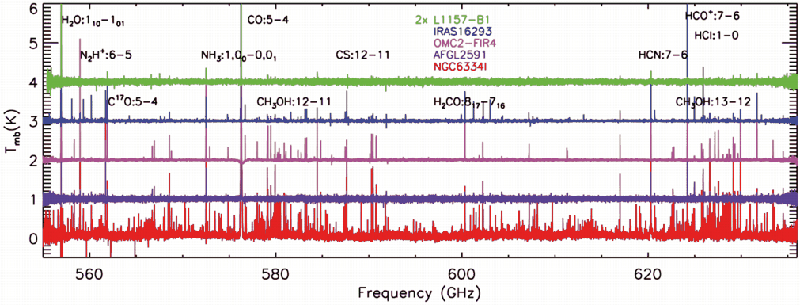| EPoS Contribution |
|
The strange complexity of the protostar OMC-2 FIR 4 as revealed by Herschel/HIFI
Mihkel Kama Astronomical Institute 'Anton Pannekoek', Amsterdam, TheNetherlands | |
| A new window onto protostellar cores has been opened with the Herschel mission, which offers unique views of the transitions of many molecules. Among others, water lines and high-excitation transitions of many molecules can now be observed. I will report on the results from the Herschel/HIFI spectral survey of the Orion Class 0 protostar OMC-2 FIR 4 obtained in the CHESS Key Programme. We detect more than 640 spectral lines from over two dozen molecules, tracing components ranging from cold and tenuous to warm and dense. Following an overview of the survey and the detections, I will discuss the nature of several newly discovered kinematic components and present results from the analyses of selected molecules and source components. Finally, drawing also on complementary data, I will compare our new picture of OMC-2 FIR 4 with other protostars and will discuss it in the context of the evolution of protostellar envelopes and hot cores. | |
 | |
| Caption: Figure 1 from Ceccarelli et al. (2010), showing a comparison of protostars of various luminosities as seen in part of the CHESS Herschel/HIFI spectral surveys. OMC-2 FIR 4, in the middle, is shown to be comparatively line-rich. | |
| Collaborators: C.Dominik, API/UvA, The Netherlands C.Ceccarelli, IPAG, France A.Lopez-Sepulcre, IPAG, France E.Caux, CESR, France A.Fuente, OAN, Spain T.Alonso Albi, OAN, Spain A.G.G.M.Tielens, Leiden Observatory, The Netherlands |
Key publication
|

